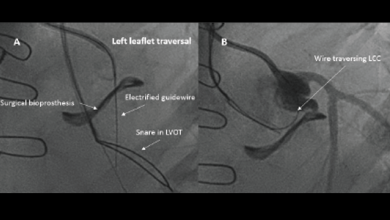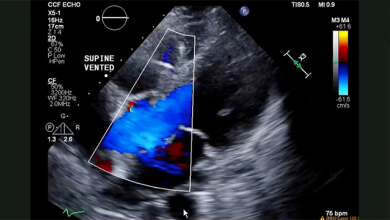Search results
Author(s):
Miguel Alejandro Rodriguez-Ramos
Added:
3 years ago
Type 2 diabetes is a major risk factor for the development of heart disease.1 At the beginning of the last century, or even before, several authors described a possible association between diabetes and heart failure (HF).2 However, according to the Heart Failure Association of the European Society of Cardiology guideline for the treatment of type 2 diabetes and HF, the first report of this…
View more
Valve-in-valve TAVR
Author(s):
Emily Perdoncin
,
Gaetano Paone
,
Isida Byku
Added:
2 years ago
Article
High-density Lipoprotein Cholesterol — The Next Battle Front in the Fight Against Heart Disease
Author(s):
Raif Tawakol
Added:
3 years ago
Article
Gender Disparities in PAD
Author(s):
Andrea Martinez
,
Jingwen Huang
,
Arash Harzand
Added:
1 month ago
Article
Author(s):
Miho Fukui
,
João L Cavalcante
Added:
3 years ago
Degenerative calcific aortic stenosis (AS) is one of the most common valvular heart diseases, affecting >3% of those aged >65 years in the West.1 As a result of an aging population, the prevalence of AS is expected to increase. Severe AS causes chronic pressure overload of the left ventricle (LV), resulting in LV hypertrophy (LVH), diastolic dysfunction, an increase in the size of the left…
View more
Author(s):
Matthew J Budoff
Added:
3 years ago
Cardiac computed tomography (CT) has evolved greatly over the last 20 years. This article reviews its current clinical uses, and describes some of the potential for even greater utility in the near future. Electron beam tomography (EBT) was developed 20 years ago specifically for cardiac imaging. Although the technique can quantify ventricular anatomy and function1 as well as myocardial…
View more
Author(s):
Essa Hariri
,
Anna Scandinaro
,
Mazen M Al Hammoud
,
et al
Added:
1 year ago
Author(s):
Theodore Mazzone
Added:
3 years ago
Patients with type 2 diabetes mellitus (DM) have a marked increase in the risk of myocardial infarction (MI), and a substantially worse prognosis after MI compared with patients without diabetes.1–3 In recent years, it has become apparent that optimal control of blood pressure and low-density lipoprotein cholesterol (LDL-C) level can substantially reduce excess cardiovascular risk in patients…
View more
Author(s):
Stéphane G Carlier
,
Kaoru Tanaka
,
Amin Katouzian
Added:
3 years ago
Most cases of myocardial infarction and stroke occur when a thrombus is formed on a previously stable plaque that ruptures.1 Persons at risk typically have no premonitory symptoms, and angiographic studies of coronary arteries in patients with non-fatal acute coronary syndromes (ACS) showed that most such events are due to rapid progression of mild, hemodynamically insignificant lesions.2–4…
View more
Author(s):
Sophia Zoungas
,
John Chalmers
,
Anushka Patel
Added:
3 years ago
Summary of the ADVANCE Trial Findings
The ADVANCE trial was a factorial, randomised study of 11,140 individuals with type 2 diabetes from over 200 collaborating centres in 20 countries from Asia, Australasia, Europe and North America. Participants with either a history of macrovascular or microvascular disease or at least one major risk factor for cardiovascular disease and any initial level of…
View more













 « First
« First